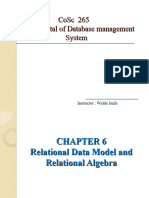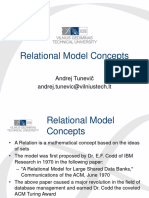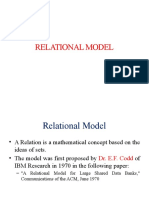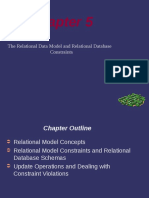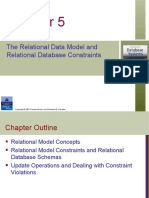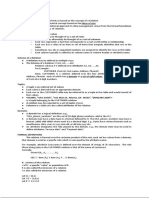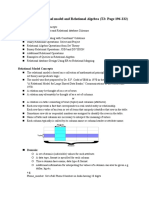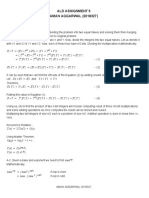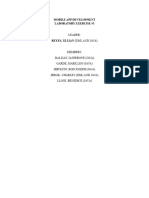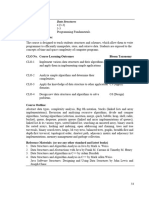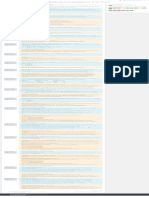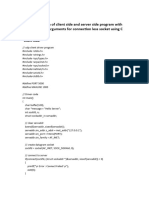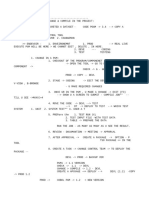0% found this document useful (0 votes)
31 views44 pagesChapter 4
The document discusses the relational data model, focusing on its concepts, constraints, and update operations. It outlines the formal definitions of relations, tuples, domains, and integrity constraints such as key, entity, and referential integrity. Additionally, it describes how to handle constraint violations during database updates and the importance of maintaining data integrity.
Uploaded by
talaganineerajCopyright
© © All Rights Reserved
We take content rights seriously. If you suspect this is your content, claim it here.
Available Formats
Download as PDF, TXT or read online on Scribd
0% found this document useful (0 votes)
31 views44 pagesChapter 4
The document discusses the relational data model, focusing on its concepts, constraints, and update operations. It outlines the formal definitions of relations, tuples, domains, and integrity constraints such as key, entity, and referential integrity. Additionally, it describes how to handle constraint violations during database updates and the importance of maintaining data integrity.
Uploaded by
talaganineerajCopyright
© © All Rights Reserved
We take content rights seriously. If you suspect this is your content, claim it here.
Available Formats
Download as PDF, TXT or read online on Scribd
/ 44







